
Only Newton's 1/r2gravitational field gives closed orbits.
Presence of Sun modifies geometry of space making Mercury orbit visibly
(0.48'' for century) open.
The following programme (cortesy of dott. Mauro Brunato) shows how orbits
get open for fields other than 1/r2.
You can load zip or exe version, together with example of
input parameters.
See also films on open and closed
orbits.
General relativity predics also that light rays are cuvred in
presence of mass (by a factor of two more that it would result from Newton's theory). Therefore, light from distant stars is curved and/or doubled by
massive galaxies, like on this photo from Hubble telescope 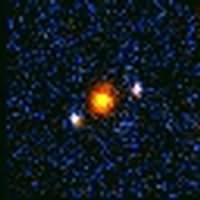
A similar effect is common as you see in these photos:
1. a special "magic" eye
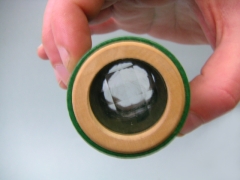 |
 |

|
2. A simple ruler
3. Infinity of "fashionable" gadgets from window shops
 |
 |
 |
 |

|
|
Trento |
Milano |
Verona |
Paris |
Electron is a lepton - light particle,
like e Greek "small" euro coin.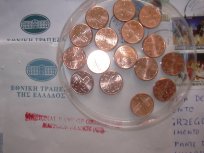

Positron seems to be the same as electron - just its reverse, but maybe is slightly different? (find the
difference).![]()
![]()
Lepton tau is still called "light" but
it is heavier that proton and neutron, which are called "hadrons", i.e. heavy 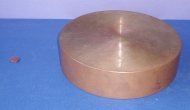
Proton, neutron and antiproton are 1837 times heavier than electron (2
zł coin is like 1 euro) 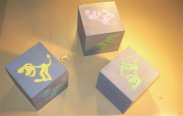
Proton  and neutron
and neutron  are made of quarks: we know that three are inside but nobody can
extract them
are made of quarks: we know that three are inside but nobody can
extract them
proton (quarks uud), neutron
(quarks udd), antyproton (anti-quarks
uud) - see the "tails" of quarks "up" and
"down".
Quarks differ by mass, electrical charge,
flavour (strange, beatiful) and color; then we have anti-quarks
They do not stay still ![]() inside nucleons but spin so quickly that seem to be white.
inside nucleons but spin so quickly that seem to be white. 
This is so called "Standard Model" of elementary particles. But, maybe,
proton is more complex, like this cube? 
Modelling of wave packets scattering on a potential barrier is a common task ![]()
We give here some links:
http://www.sgi.com/fun/java/john/wave-sim.html
hing/mirrors/qm/packet/wave-map.html
http://www3.tsl.uu.se/~karlsson/sc_wave.html